
After a pleasant ride on the Seabus, we took a normal bus to the base of
Grouse Mountain, as shown in the map below:

Once there, we bought a ticket for the cable cars that will take you to the area with the visitor's center, etc. I had read about
the visitor's center online, and it sounded like a nice place to spend some time wandering as well as a good spot (on a clear day) to
get good views of the Vancouver area.

According to information from several sources, these cable cars travel a 1000 meter incline in 8 minutes.
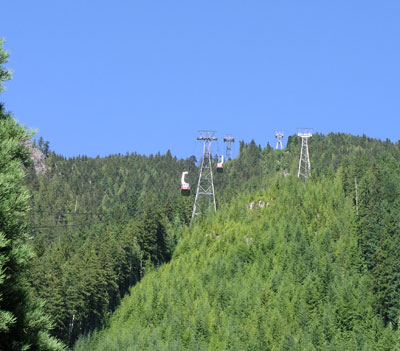
Aside from the great views of Vancouver, one of the first things we found near the Chalet was a patch of GIANT clover.
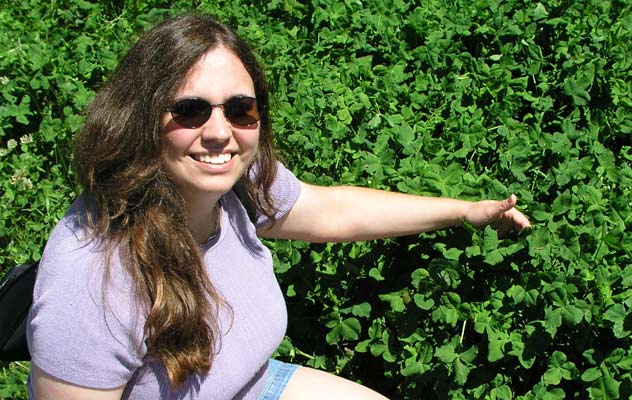
Here's some views of Vancouver....
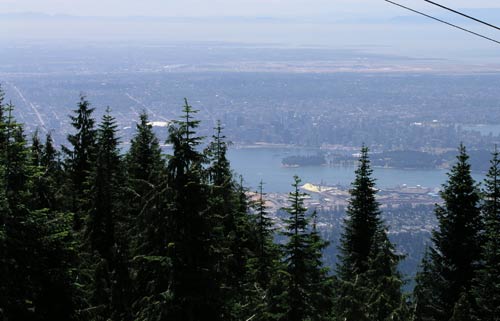
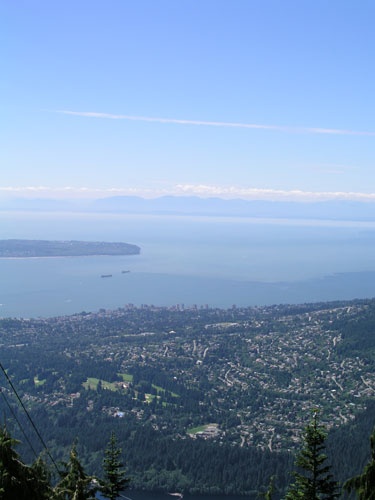
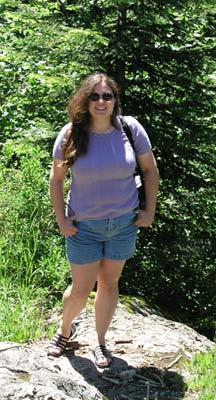
Here's a picture of Camel Mountain (for its double peak), which is next to Grouse Mountain.
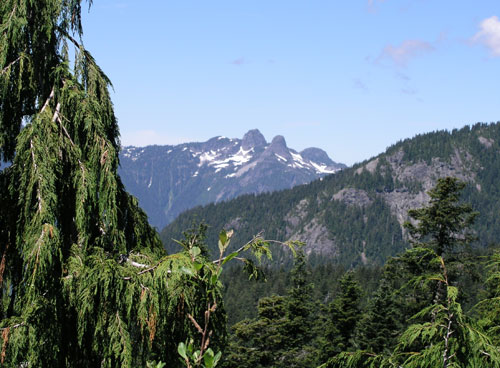
Here's Mike by the "baby" Grizzly Bear habitat. (You can see part of the Grouse Mountain ski area in the background.) According to literature from Grouse Mountain, these bears were orphaned. Visitors are separated from the bears by a tall fence (and I believe some part of it was electric?)
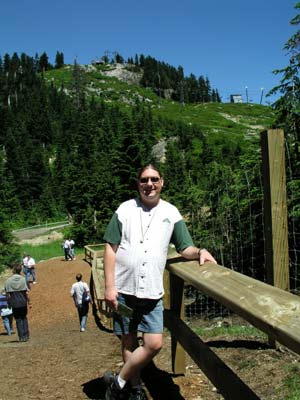
and one of the bears was particularly restless that day....
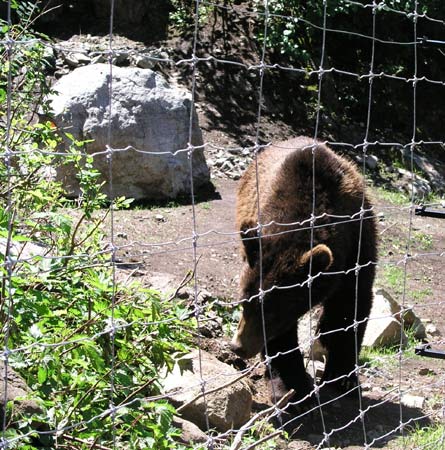
"So, there I was, quietly munching some shrubbery..."
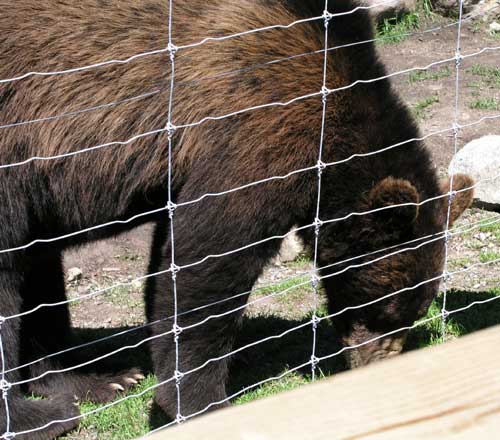
"and little did I know...."


"No way! I'm not getting wet!
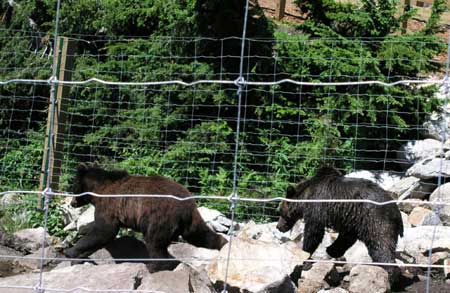

There were some interesting tourists there with us....
Dude, what's that thing on your back?
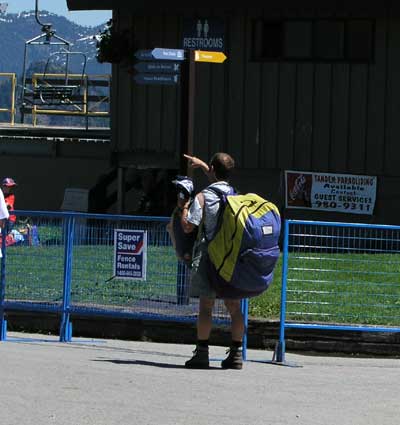
We stopped to see the Lumberjack Skills Show, which was quite entertaining. Part of the show was done while climbing up and down 60 foot wood pillars (to simulate large trees). It did include some of the typical tourist-show stunts, including the "stupid tourist" who was really part of the show. Towards the end, the "stupid tourist" climbed up one of the pillars "unnoticed"....much to the anguish of some of the Asian tourists there. Not realizing it was a typical North American gag, they were pointing and desperately trying to get the attention of the people running the show. Of course, even knowing that he must have been secured somewhere to the post, it was still unnerving for all members of the audience to watch him standing on top of it, pretending to be drunk and about to fall. (Of course, at the last second as he seemed to fall, it turned out that he was attached to a guidewire, and he glided down to safety.)
Afterwards, we stopped at a snack shop on the side of the mountain for something to drink. From the patio, we got a great view
of another mountain, in the distance (eastward?)....
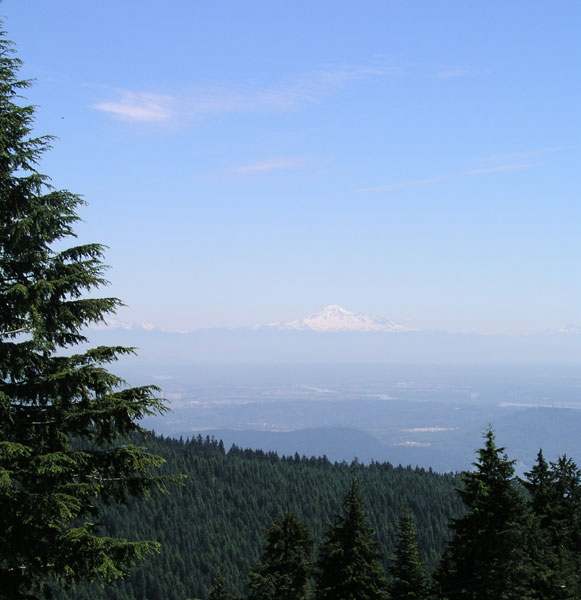
We had thought about staying on top of the mountain for dinner, but a day of wandering in the unexpectedly warm Vancouver sun left of a little weary. So, we made a quick stop at the souvenir shop (I wanted to buy some post cards), and headed back down the mountain. (via cable car, of course!)
Here's a picture Mike took of the reservoir near Grouse Mountain - which supposedly supplies one third of Vancouver's water.
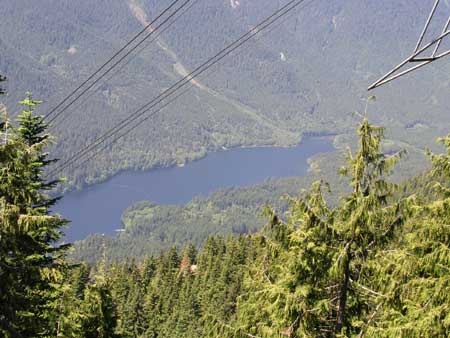
Before going back to the hotel (once we were on the Southern side of the inlet again), we stopped at Gastown (which was just
east of the Seabus terminal) -
just to poke around and catch some dinner. We found another great restaurant in a historic building called
The Landing. The restaurant itself was in the lower floor, facing the inlet, and it
was named the "Steamworks Brewery". With a casual atmosphere, a view of the inlet, and more great food (we hadn't thought
Vancouver was such a great place for dining, but it is!) it was just what we needed after a day of travel.

After we finished our meal, we took a walk around Gastown. Since the sun sets much later in Canada in the summer, it was
still daylight. (That was something we had to adjust to, much as when we had visited Alaska in the summer. We laughed that people
must have thought we went to bed unusually early - only 11 pm to midnight - just after it had gotten dark!)
From Moon Handbooks: British Columbia, by Andrew Hempstead: "Named for the owner of the city's first saloon, Gastown is a marvelous place to spend a few hours. "Gassy Jack" Deighton, an English boat pilot, offered locals all the whiskey they could drink in return for helping him build a saloon beside Burrard Inlet in 1867. The town that grew around the saloon was officially named Granville in 1869, but it has always been known as Gastown. The district's tree-lined cobblestone streets and old gas lamps front brightly painted restored buildings housing galleries, restaurants, and an abundance of gift and souvenir shops.Of course, you can get a different perspective on the steam clock from another travel guide....Most of the action centers along Water Street.... As you first enter Water Street, you're greeted by The Landing, a heritage building that has had its exterior restored to its former glory and its interior transformed to an upmarket shopping arcade. It also holds eateries and the Steamworks Brewing Co., a pub/restaurant boasting harbor views.
On the corner of Water and Cambie Streets is a steam clock, one of only two in the world (the other is a replica of this, the original one). Built by a local clock maker in the mid-1970's, it is powered by a steam system originally put in place to heat buildings along a 10-km-long underground pipeline that sakes through downtown. Watch for the burst of steam every 15 minutes, which sets off steam whistles to the tune of Westminster chimes."
From Vancouver: Secrets of the City, by Shawn Blore: "The Gastown Steam Clock is one of the least secret things in the city. It sits wheezing on Water Street, surrounded most days by a claque of camera-toting tourists madly clicking away at what the plaque declares to be the "World's First Steam Powered Clock". What a crock. The clock, in fact, is driven by electricity, and has been for most of its existence. True, when first built by Vancouverite Ray Saunders, the timepiece did indeed derive its motive power from steam. But the system was tricky, requiring constant fidgety adjustments. After five years of near-constant tweaking, Saunders gave up and threw the switch on the auxiliary electric motor. From then till now and for the foreseeable future, the whistling bits of steam have just been for show."